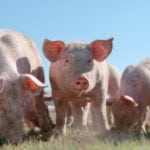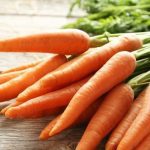 Technology
Technology  Technology
Technology  Humans
Humans 10 Everyday Human Behaviors That Are Actually Survival Instincts
 Animals
Animals 10 Animals That Humiliated and Harmed Historical Leaders
 History
History 10 Most Influential Protests in Modern History
 Creepy
Creepy 10 More Representations of Death from Myth, Legend, and Folktale
 Technology
Technology 10 Scientific Breakthroughs of 2025 That’ll Change Everything
 Our World
Our World 10 Ways Icelandic Culture Makes Other Countries Look Boring
 Misconceptions
Misconceptions 10 Common Misconceptions About the Victorian Era
 Mysteries
Mysteries 10 Strange Unexplained Mysteries of 2025
 Miscellaneous
Miscellaneous 10 of History’s Most Bell-Ringing Finishing Moves
 Technology
Technology Top 10 Everyday Tech Buzzwords That Hide a Darker Past
 Humans
Humans 10 Everyday Human Behaviors That Are Actually Survival Instincts
 Animals
Animals 10 Animals That Humiliated and Harmed Historical Leaders
Who's Behind Listverse?

Jamie Frater
Head Editor
Jamie founded Listverse due to an insatiable desire to share fascinating, obscure, and bizarre facts. He has been a guest speaker on numerous national radio and television stations and is a five time published author.
More About Us History
History 10 Most Influential Protests in Modern History
 Creepy
Creepy 10 More Representations of Death from Myth, Legend, and Folktale
 Technology
Technology 10 Scientific Breakthroughs of 2025 That’ll Change Everything
 Our World
Our World 10 Ways Icelandic Culture Makes Other Countries Look Boring
 Misconceptions
Misconceptions 10 Common Misconceptions About the Victorian Era
 Mysteries
Mysteries 10 Strange Unexplained Mysteries of 2025
 Miscellaneous
Miscellaneous 10 of History’s Most Bell-Ringing Finishing Moves
Ten Offbeat Science Experiments Involving Food
When it comes to the world of food, the human imagination knows no bounds. Scientists are devising all kinds of bizarre and wonderful experiments to push the boundaries of modern cuisine. Some are finding ways to make butter out of gases in the air. Others opt to use the laws of thermodynamics to calculate how best to cook a pizza. From garlic breath antidotes to miso in space, here are ten of the barmiest science experiments involving food.
Related: 10 Experiments in Space That Seem Pointless
10 Gene-Edited Banana That Doesn’t Go Brown
Scientists in England claim to have whipped up a banana that does not go brown. They say gone are the days of rotten, overripe mush, thanks to a new, genetically engineered variant of the yellow fruit.
Biotech company Tropic used advanced DNA modifications to increase the shelf life of the tropical treat. Theirs is said to stay fresh and yellow for 12 hours after it has been peeled. Researchers also reckon it is less likely to turn brown if it gets bumped while picked or transported.
The team deactivated the gene that drives the fruit to produce an enzyme called polyphenol oxidase. That substance causes bananas to turn brown. Tropical was able to make pinpoint edits to existing DNA without having to insert any foreign genes.
Bananas are one of the foods that consumers put in the bin most often. “Food waste is a big contributor to greenhouse gas emissions. It’s very bad, clearly,” said Tropic CEO Gilad Gershon. “Bananas are the fourth biggest crop globally, but also one where the perishability is very high. Some estimates say that 50% of the bananas grown are never eaten.”[1]
9 Physicists Claim to Have Discovered the Perfect Pasta Recipe
The art of cooking pasta is more controversial than you might think. Just look at all those videos of Italians losing their rag when people break spaghetti. But when it comes to cacio e pepe, physicists say they have found the perfect scientific recipe to avoid lumps without fail.
Cacio e pepe is relatively simple to make. You cook pasta, then add cheese and pepper to the starchy water to make a sauce. Researchers at the Max Planck Institute in Germany say the key to avoiding lumps is the starch-to-water ratio. The team experimented with different starch levels and temperatures for the perfect creamy sauce. They recommend 5g of powdered starch for every 50g of water, heating gently to thicken, another 100g of water to cool, and 200g of cheese. They say that, of all the variations they have tried, this goes best with 300g of al dente pasta.
“A true Italian grandmother or a skilled home chef from Rome would never need a scientific recipe for cacio e pepe, relying instead on instinct and years of experience,” the scientists wrote. “For everyone else, this guide offers a practical way to master the dish.”[2]
8 Scientists Brew Miso on the International Space Station
The International Space Station is a hub of vital research. Scientists work tirelessly to answer important questions on microgravity, dark matter, cosmic rays, and, of course, what miso tastes like when it is fermented in space.
In April 2025, scientists revealed they had successfully created the first miso in space. They whipped a batch of Japanese soybean paste and sent it to Earth in a plastic container. Researchers found that the ISS miso has a salty, umami flavor similar to regular terrestrial miso, packing plenty of nutrients. It does taste a little nuttier, though.
As bizarre as it sounds, this study does have practical uses. Astronauts often lose their appetite in space. Space travelers report a dulled sense of taste in orbit. Scientists hope that brewing food in space could help overcome this issue.[3]
7 Eating with Your Mouth Open Can Make Food Taste Better
A group from Oxford University is ripping up the rulebook on table etiquette. Their advice is that we would all be better off eating with our mouths open. They say chewing food with a gaping mouth helps spread “volatile organic compounds” to your nose, improving the meal’s taste. These molecules can trigger bursts of aroma that enhance flavor and boost the dining experience.
Experimental psychologist Charles Spence reckons that when it comes to eating food, we are “doing it all wrong.” He told reporters, “When it comes to sound, we like noisy foods—think crunchy and crispy. Both crisps and apples are rated as more pleasurable when the sound of the crunch is amplified. To best hear the crunch of an apple, a potato crisp, a carrot stick, a cracker, crispbread, or a handful of popcorn, we should always ditch our manners and chew with our mouths open.” He also thinks people should eat with their hands more often to enjoy the texture of their meals.[4]
6 Scientists Create Butter from Carbon Dioxide
The trend for dairy alternatives is ramping up. Scientists in the US have come up with a way to produce butter that doesn’t involve animals. Instead, they make theirs out of gases in the air. Researchers at the California company Favor devised a high-tech process to create their dairy-free spread. They say it tastes every bit as good as the original.
Favor’s team uses a complex thermochemical process to create their synthetic butter. They combine carbon dioxide from the air with hydrogen and oxygen to build fat molecules. Scientists admit this new method is unorthodox but say it is much better for the planet. The livestock industry has a giant carbon footprint, making up 14.5% of global greenhouse gas emissions.
Bill Gates, Microsoft’s billionaire founder, is a prominent champion of Favor’s work. As he explained online, “The process doesn’t release any greenhouse gases, and it uses no farmland and less than a thousandth of the water that traditional agriculture does. And most important, it tastes really good – like the real thing, because chemically it is.”[5]
5 Physicists Write Equation for the Perfect Pizza
Scientists might just have cracked the mathematical formula for a perfect pizza. In 2018, two physicists and a food anthropologist published a paper called “The Physics of Baking Good Pizza.” The trio used thermodynamic principles to calculate how best to bake a simple Margherita topped with tomato, mozzarella, and basil.
Pizza makers say the best way to cook the Italian staple is in a brick oven at 625°F (330°C) for two minutes. But what if you only have an electric cooker? Well, that is where the equation comes in. The scientists allowed for the conductivity of a metal baking rack or tray. They advise setting the heat to 450°F (230°C) for 170 seconds. Helpfully, there are extra variables in the formula for toppings with high water content. These need to be cooked for longer due to evaporation.
And the culinary experiments do not stop there. Italian physicist Andrey Varlamov, who worked on the study, also co-authored a paper on how best to steam dumplings.[6]
4 Yogurt Is the Best Way to Fight Garlic Breath
Ever worried about the stench of garlic on your breath? A 2023 study from Ohio State University claims to have the solution: yogurt. Researchers say yogurt contains fats and proteins that block garlic’s odors before they contaminate your breath.
Manpreet Kaur and Sheryl Barringer discovered that yogurt is primed to neutralize the sulfurous compounds in garlic that cause such a foul stink. Their tests found that the dairy product reduces 99% of garlic’s worst-smelling volatiles. High-fat yogurt is said to be more effective at scrubbing away the odors. The pair also revealed that frying garlic helps lower the stench released when it is eaten.[7]
3 Mouse Brain Study Could Explain Our Vivid Memories of Food Poisoning
Food poisoning can leave a foul taste in the mouth. If a certain meal causes you to become ill, chances are you will not return to that food in a hurry. In 2025, neuroscientists explained why food aversion can be so acute. The team studied the brains of mice and found the region where these bad memories dwell. Mice typically have short attention spans and need things to happen quickly to learn them. However, when it comes to food poisoning, mice can avoid past mistakes long after the event.
Researchers at Princeton University fed the rodents Kool-Aid, then made them sick with a lithium injection. When the mice drank Kool-Aid again two days later, it triggered sensitive neurons in the brain’s amygdala region, where taste is processed. This suggests mice will alter their neural circuitry to remember harmful flavors. Those who did not get sick the first time did not react to the fruity drink in the same way.
Researchers say the impact of this study could stretch well outside of food poisoning. The study was born from curiosity, but as Princeton’s Ilana Witten told reporters, “It could be curiosity that’s very relevant to mental health.”[8]
2 Researchers Grow Foie Gras in Labs from Animal Cells
How does the idea of meat grown in labs sound to you? It could soon be hitting the shelves. Steak, beef, chicken, even foie gras—scientists claim they can create all of it without needing to raise or kill animals. Instead, researchers have devised a way to grow meat from animal cells.
Scientists cultivate the cells in a liquid that is packed with nutrients and substances that stimulate growth. The cells are prompted to develop into certain types of tissue like muscle, blood, and fat. These give the meat its lovely taste and texture.
There are still key concerns around the safety of foods like lab-grown foie gras, but experts are confident these synthetic meats could be on our plates soon. “Many of the techniques used to create cell-cultivated products have been used to create cell-cultivated medicines previously,” said UK scientific advisor Robin May. “So for us, it’s a huge advantage to be able to draw on that massive amount of evidence.”[9]
1 Vietnam Team Finds Evidence of 2,000-Year-Old Curry
Scientists in Vietnam pieced together the recipe for a curry from 2,000 years ago using ancient plant remains. They say it is the earliest evidence that the meal was made and eaten in the area.
The team studied plant remains found on 12 stone grinding tools at the Óc Eo dig site. This revealed remnants of rice and a variety of spices. Evidence suggests that the people of ancient Vietnam enjoyed turmeric, ginger, fingerroot, sand ginger, galangal, clove, nutmeg, and cinnamon. In fact, the nutmeg seeds still kept their aroma despite being two millennia old.
“We discovered a wide variety of spices that had traveled from different locations to Óc Eo,” explained lead researcher DrHsiao-chun Hung. “All of these spices reached Vietnam 2,000 years ago, contributing to the creation of delightful dishes that must have been enjoyed by the people of that time.”
Scientists reckon curry was introduced to Southeast Asia by South Asian travelers. Óc Eo was probably a major port in the kingdom of Funan. So perhaps, the team says, the dish was brought by visiting traders across the Indian Ocean.[10]








